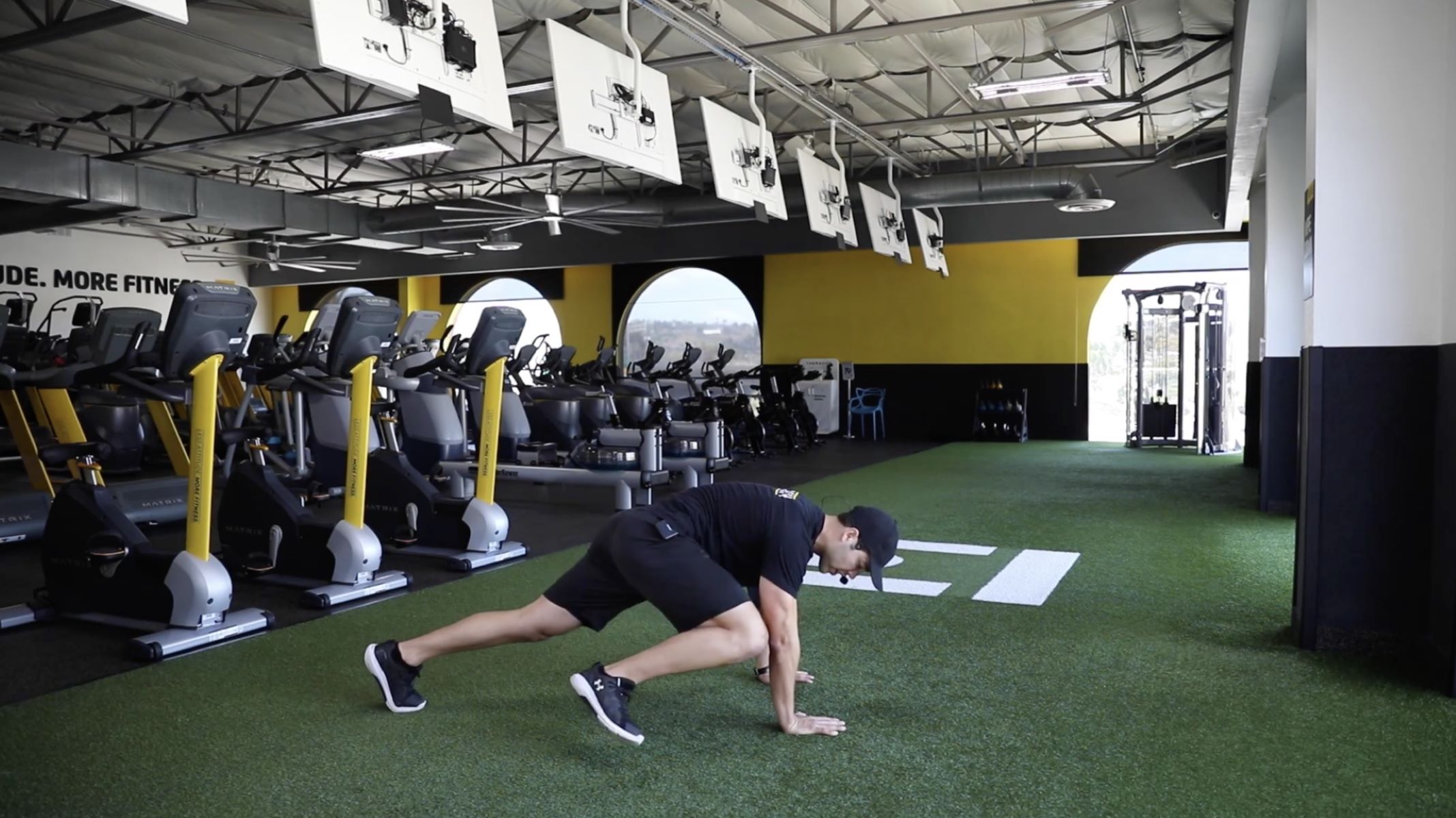

Featured
What Is A Cardiovascular Endurance
Modified: January 22, 2024
Discover the importance of cardiovascular endurance and how it contributes to overall fitness. Explore the featured benefits of improving your aerobic capacity and enhancing heart health.
Introduction
Cardiovascular endurance is a highly sought-after attribute in the realm of fitness and athletic performance. It refers to the ability of the cardiovascular system, primarily the heart, lungs, and blood vessels, to deliver oxygen and nutrients to the working muscles efficiently and effectively during prolonged periods of physical activity. This endurance component plays a critical role in various activities, including running, swimming, cycling, and even everyday tasks like climbing stairs or brisk walking.
Having good cardiovascular endurance is essential for maintaining overall health and well-being. It not only enhances the body’s ability to perform physical activities but also promotes heart health, improves metabolism, and assists in weight management. Additionally, individuals with high cardiovascular endurance are better equipped to handle stress and have a reduced risk of developing cardiovascular diseases.
However, achieving and maintaining optimal cardiovascular endurance requires effort and dedication. It involves a combination of regular aerobic exercises, proper nutrition, adequate rest, and lifestyle modifications. By understanding the importance of cardiovascular endurance and implementing strategies to improve it, individuals can enhance their overall fitness levels and lead a more active and fulfilling life.
This article aims to explore the concept of cardiovascular endurance in detail, highlighting its importance, factors affecting it, and the benefits of improving it. Furthermore, practical strategies for enhancing cardiovascular endurance will be provided, along with a comparison to muscular endurance to better understand the differences between the two.
What is Cardiovascular Endurance?
Cardiovascular endurance, also known as cardiorespiratory endurance or aerobic endurance, refers to the ability of the cardiovascular system to sustain prolonged physical activity by delivering oxygen and nutrients to the muscles. It is a measure of the body’s efficiency in utilizing oxygen and removing metabolic waste products during exercise.
When engaging in activities that require cardiovascular endurance, such as running, swimming, or cycling, the heart pumps oxygenated blood to the working muscles, allowing them to perform at a higher intensity for an extended period. The lungs play a crucial role by supplying oxygen to the blood and eliminating carbon dioxide, while the network of blood vessels distributes the oxygen-rich blood throughout the body.
Good cardiovascular endurance means that the body can efficiently supply oxygen and nutrients to the muscles, allowing them to sustain activity without becoming fatigued quickly. It also refers to the ability to recover quickly after intense bouts of exercise.
Cardiovascular endurance is typically assessed through methods such as the VO2 max test, which measures the maximum amount of oxygen an individual can use during exercise. A higher VO2 max indicates better cardiovascular endurance and overall aerobic capacity.
Incorporating activities that challenge the cardiovascular system, such as running, swimming, cycling, or even brisk walking, can help improve cardiovascular endurance over time. By gradually increasing the duration and intensity of these aerobic exercises, individuals can train their cardiovascular system to become more efficient and resilient.
It is important to note that cardiovascular endurance is not solely determined by the capacity of the heart and lungs but is also influenced by other factors, including age, genetics, overall fitness level, and lifestyle habits. By addressing these factors and implementing strategies to improve cardiovascular endurance, individuals can enhance their physical performance and overall health.
Importance of Cardiovascular Endurance
Cardiovascular endurance is a crucial aspect of overall fitness and has numerous benefits for both physical health and performance. Let’s explore why cardiovascular endurance is so important:
- Enhanced Stamina: Good cardiovascular endurance enables the body to perform physical activities for longer durations without excessive fatigue. It improves stamina, allowing individuals to engage in activities like running, cycling, or swimming for extended periods.
- Improved Heart Health: Regular aerobic exercise to improve cardiovascular endurance strengthens the heart muscle. It promotes efficient functioning and helps lower resting heart rate, blood pressure, and cholesterol levels. This, in turn, reduces the risk of developing cardiovascular diseases such as heart attacks and strokes.
- Weight Management: Engaging in activities that challenge cardiovascular endurance can aid in weight management. Regular aerobic exercises burn calories and increase metabolism, contributing to weight loss or maintenance. Combined with a balanced diet, cardiovascular endurance training can help individuals achieve and maintain a healthy body weight.
- Enhanced Oxygen Delivery: Cardiovascular endurance improves the body’s ability to deliver oxygen to the working muscles. This increased oxygen supply improves muscle function, allowing individuals to perform physical tasks more effectively and with reduced effort.
- Reduced Risk of Chronic Diseases: Regular aerobic exercise, which enhances cardiovascular endurance, has been linked to a reduced risk of various chronic conditions, including type 2 diabetes, certain types of cancer, and osteoporosis. It also improves immune function, reducing the risk of infections and illnesses.
Additionally, good cardiovascular endurance contributes to better mental health. Engaging in aerobic exercises releases endorphins, also known as the “feel-good” hormones, promoting positive mood, reducing stress, and alleviating symptoms of anxiety and depression.
Whether you are an athlete aiming to improve sports performance or an individual seeking to enhance overall fitness and well-being, developing and maintaining cardiovascular endurance is essential. Incorporating regular aerobic activities into your routine can have a profound impact on your physical health, longevity, and quality of life.
Factors Affecting Cardiovascular Endurance
Cardiovascular endurance is influenced by various factors, which can either enhance or hinder its development. Understanding these factors can help individuals identify areas to focus on when working to improve their cardiovascular endurance. Let’s explore the key factors affecting cardiovascular endurance:
- Genetics: Genetic factors play a role in determining an individual’s baseline cardiovascular endurance. Some people naturally have a higher aerobic capacity, making it easier for them to develop and maintain cardiovascular endurance. However, genetics should not be seen as a limitation, as cardiovascular endurance can be improved through training and lifestyle modifications regardless of genetic predisposition.
- Age: Cardiovascular endurance tends to decline with age due to natural changes in the body’s physiological systems, such as a decrease in maximum heart rate and reduced lung function. However, regular exercise can help slow down the age-related decline and preserve cardiovascular endurance.
- Overall Fitness Level: The initial fitness level of an individual plays a significant role in cardiovascular endurance. Those who are already physically active and have a higher level of fitness may have a head start in developing cardiovascular endurance than those who are sedentary. However, regardless of starting point, consistent training and exercise can improve cardiovascular endurance for individuals at any fitness level.
- Training Intensity: The intensity of aerobic exercises directly affects cardiovascular endurance. Engaging in activities that elevate heart rate and challenge the cardiovascular system, such as high-intensity interval training (HIIT) or long-distance running, can enhance endurance more effectively than low-intensity workouts. Gradually increasing the intensity of workouts over time helps push the limits of cardiovascular endurance and promote adaptations in the cardiovascular system.
- Diet and Nutrition: Proper nutrition plays a vital role in supporting cardiovascular endurance. A diet rich in fruits, vegetables, whole grains, lean proteins, and healthy fats provides the necessary fuel for physical activity. Hydration is also crucial, as water intake affects cardiovascular function and overall performance.
- Rest and Recovery: Adequate rest and recovery periods are vital for developing cardiovascular endurance. Muscles need time to repair and adapt after intense workouts. Overtraining without allowing sufficient recovery can lead to fatigue, decreased performance, and increased risk of injury.
It is important to note that these factors are not mutually exclusive and can interact with one another. For example, proper nutrition and rest can support training intensity and improve overall fitness, which in turn enhances cardiovascular endurance.
By understanding and considering these factors, individuals can tailor their training programs and lifestyle choices to optimize the development and maintenance of cardiovascular endurance.
Benefits of Improving Cardiovascular Endurance
Improving cardiovascular endurance offers an array of benefits that extend beyond just being able to exercise for a longer duration. Let’s explore some of the key advantages of enhancing your cardiovascular endurance:
- Increased Stamina: One of the primary benefits of improving cardiovascular endurance is increased stamina. With improved endurance, you will be able to engage in physical activities for longer periods without feeling excessively fatigued. This is particularly beneficial for activities like running, cycling, or participating in sports.
- Enhanced Energy Levels: Regular aerobic exercise to improve cardiovascular endurance boosts energy levels. It enhances the supply of oxygen and nutrients to the muscles and improves the efficiency of energy production in the body. As a result, you will experience an increase in overall energy levels throughout the day.
- Heart Health: Cardiovascular endurance training strengthens the heart muscle and improves its efficiency. It reduces the resting heart rate, lowers blood pressure, and improves blood circulation. These factors contribute to better heart health and reduce the risk of cardiovascular diseases such as heart attacks and strokes.
- Weight Management: Engaging in activities that challenge cardiovascular endurance helps burn calories and improve metabolism. This aids in weight management and can contribute to weight loss, as aerobic exercise promotes the use of stored body fat as a fuel source.
- Mental Well-being: Regular aerobic exercise has a positive impact on mental health and well-being. It stimulates the release of endorphins, also known as “feel-good” hormones, which improve mood, reduce stress, and alleviate symptoms of anxiety and depression.
- Improved Sleep: Regular exercise to enhance cardiovascular endurance can also improve the quality of sleep. It helps regulate sleep patterns and promotes deep and restful sleep, which is crucial for overall health and recovery.
- Increased Longevity: Several studies have shown that individuals with higher levels of cardiovascular endurance tend to have a lower risk of premature death. Enhanced cardiovascular fitness is associated with a reduced risk of developing chronic diseases such as heart disease, diabetes, and certain types of cancer.
These benefits highlight the importance of improving cardiovascular endurance for overall health and well-being. Incorporating regular aerobic exercise into your routine can have a profound impact on physical and mental health, improve longevity, and enhance your overall quality of life.
How to Improve Cardiovascular Endurance
Improving cardiovascular endurance requires consistent effort and a structured approach. Here are some effective strategies to help you enhance your cardiovascular endurance:
- Aerobic Exercise: Engage in activities that challenge your cardiovascular system on a regular basis. Running, swimming, cycling, rowing, and brisk walking are excellent examples of aerobic exercises that can help improve endurance. Aim for at least 150 minutes of moderate-intensity aerobic exercise or 75 minutes of vigorous-intensity exercise every week.
- Interval Training: Incorporate interval training into your workouts. Alternating between periods of high-intensity exertion and lower-intensity recovery allows you to challenge your cardiovascular system and elevate your endurance. For example, perform 1-2 minutes of intense exercise, followed by 1-2 minutes of active recovery. Repeat the cycle for a set duration.
- Gradual Progression: Gradually increase the intensity, duration, and frequency of your workouts to avoid overexertion and injury. Start with shorter and less intense workouts and progressively build up your endurance over time. This progressive overload principle allows your body to adapt and become more efficient at utilizing oxygen.
- Cross-Training: Incorporate a variety of aerobic exercises into your routine to engage different muscle groups and prevent boredom. This can include activities like swimming, cycling, dancing, or using cardio machines at the gym. Cross-training also helps reduce the risk of overuse injuries.
- Strength Training: Don’t neglect strength training exercises as they can improve your overall fitness and support cardiovascular endurance. Building muscular strength helps you maintain proper form and technique during aerobic activities, delaying the onset of fatigue.
- Proper Nutrition: Fuel your body with a balanced diet rich in carbohydrates, proteins, and healthy fats. Carbohydrates provide the primary source of fuel for aerobic exercise, while proteins support muscle recovery and repair. Hydration is also crucial, so drink plenty of water before, during, and after your workouts.
- Consistency and Rest: Be consistent with your workouts and aim for regular exercise sessions throughout the week. However, it’s equally important to allow adequate rest and recovery for your body to repair and adapt. Listen to your body and take rest days when needed to prevent overtraining.
- Monitor Progress: Keep track of your workouts and monitor your progress over time. Take note of your performance, endurance levels, and any improvements you observe. This will help you stay motivated and make necessary adjustments to your training program.
Remember, improving cardiovascular endurance is a gradual process. It takes time, commitment, and patience. Listen to your body, start at an appropriate level, and gradually increase the intensity and duration of your workouts. By following these strategies consistently, you can significantly enhance your cardiovascular endurance and reap the associated health benefits.
Cardiovascular Endurance vs. Muscular Endurance
While both cardiovascular endurance and muscular endurance are important components of overall fitness, they refer to different aspects of physical performance. Let’s explore the key differences between cardiovascular endurance and muscular endurance:
- Definition: Cardiovascular endurance, as mentioned earlier, refers to the ability of the cardiovascular system to sustain prolonged physical activity by efficiently delivering oxygen and nutrients to the working muscles. On the other hand, muscular endurance is the ability of a specific muscle group or groups to perform repetitive contractions for an extended period without fatigue.
- Mechanism: Cardiovascular endurance primarily relies on the efficient functioning of the heart, lungs, and blood vessels to supply oxygen and remove waste products. It involves the coordination of various physiological systems. Muscular endurance, on the other hand, is specific to the muscles being worked. It involves the muscles’ capacity to resist fatigue and continue contracting over an extended period.
- Training Techniques: Improving cardiovascular endurance often involves engaging in aerobic exercises or activities that challenge the cardiovascular system as a whole. This can include activities like running, swimming, or cycling. On the other hand, muscular endurance training typically involves performing exercises that target specific muscle groups with higher repetitions and lower resistance or load. Examples include bodyweight exercises, high-repetition resistance training, or circuit training.
- Objective: The primary objective of developing cardiovascular endurance is to improve overall aerobic capacity and the efficiency of the cardiovascular system. It enables individuals to sustain physical activity for longer durations without experiencing excessive fatigue. On the other hand, the primary objective of developing muscular endurance is to enhance the specific muscle groups’ ability to perform repeated contractions without fatigue. It is particularly important in activities that require repetitive muscle movements, such as lifting weights or performing endurance-based sports.
- Interplay: Cardiovascular and muscular endurance are interconnected and can complement each other. Enhanced cardiovascular endurance can support muscular endurance by providing a continuous supply of oxygen and nutrients to the working muscles. Likewise, muscular endurance can support cardiovascular endurance by improving the efficiency of muscle contractions and reducing the strain on the cardiovascular system.
- Specificity: While cardiovascular endurance can have a positive impact on overall fitness and daily activities, muscular endurance tends to be more specific to the muscles being trained. For example, having good cardiovascular endurance does not necessarily mean having excellent muscular endurance in specific muscle groups.
It is important to incorporate both cardiovascular endurance and muscular endurance training into your fitness regimen to achieve a well-rounded level of fitness. This can help improve overall physical performance, enhance daily activities, and reduce the risk of injuries. By understanding the differences between these two types of endurance, you can design a training program that targets both aspects effectively.
Conclusion
Cardiovascular endurance is a critical component of overall fitness and plays a significant role in promoting physical health and performance. Through regular aerobic exercise and lifestyle modifications, individuals can improve their cardiovascular endurance and enjoy a myriad of benefits.
Having good cardiovascular endurance enhances stamina, improves heart health, aids in weight management, and promotes better mental well-being. It also reduces the risk of developing chronic diseases and contributes to increased longevity.
Factors such as genetics, age, overall fitness level, training intensity, diet, and rest play a role in determining cardiovascular endurance. However, regardless of starting point or genetic predisposition, individuals can improve their cardiovascular endurance through consistent effort, gradual progression, and a structured training program.
Incorporating aerobic exercises, interval training, cross-training, strength training, proper nutrition, and rest are essential strategies for enhancing cardiovascular endurance. Tracking progress and staying consistent with workouts can help individuals monitor their improvements over time and stay motivated.
It is also important to differentiate between cardiovascular endurance and muscular endurance. While both are important, cardiovascular endurance focuses on the efficiency of the cardiovascular system, while muscular endurance is specific to the muscles being worked. Both aspects of endurance can support overall physical performance and should be addressed in a well-rounded fitness routine.
By prioritizing cardiovascular endurance, individuals can unlock their true potential, improve their overall health and well-being, and enjoy an active and fulfilling lifestyle.









